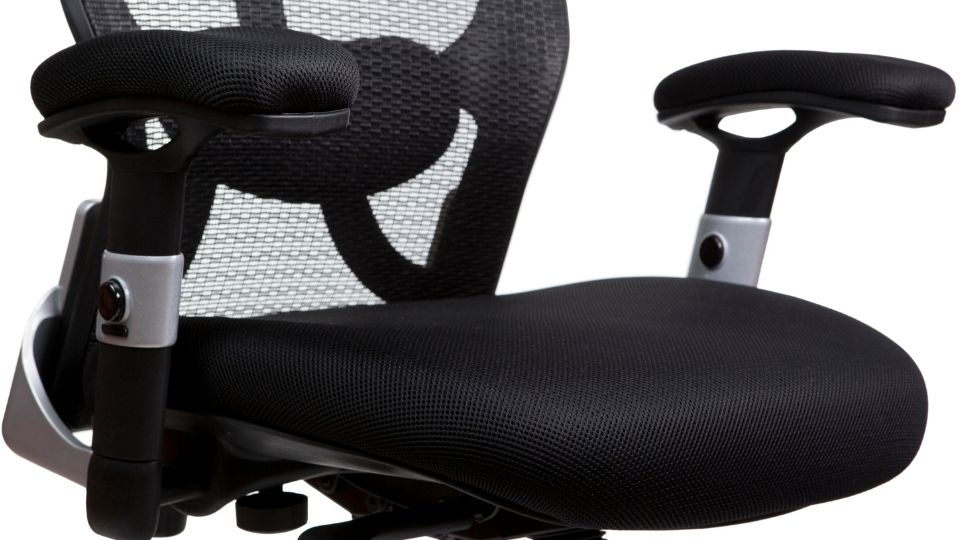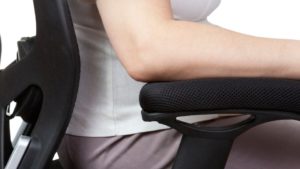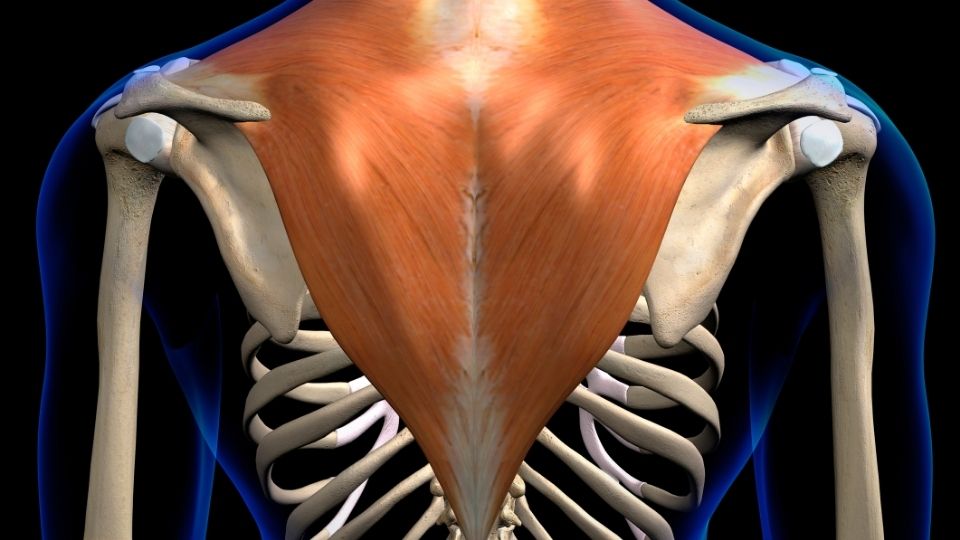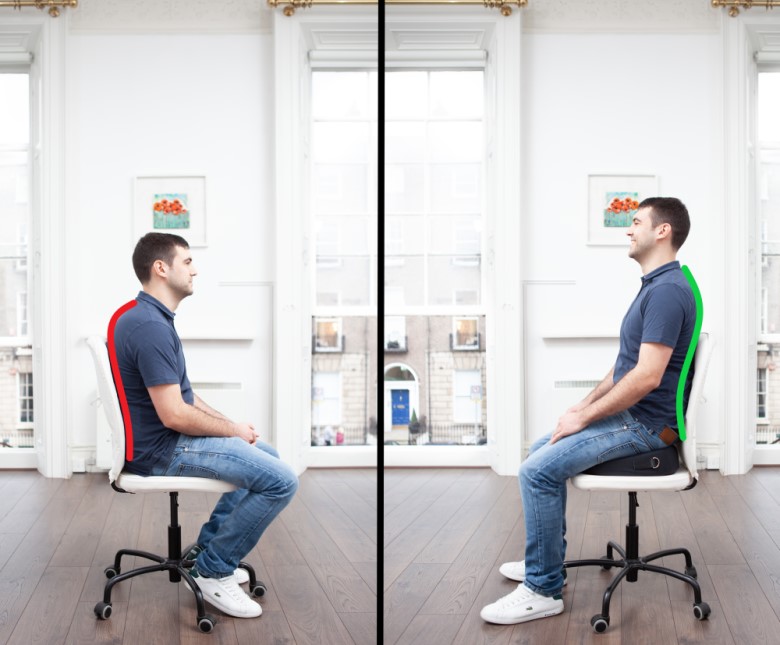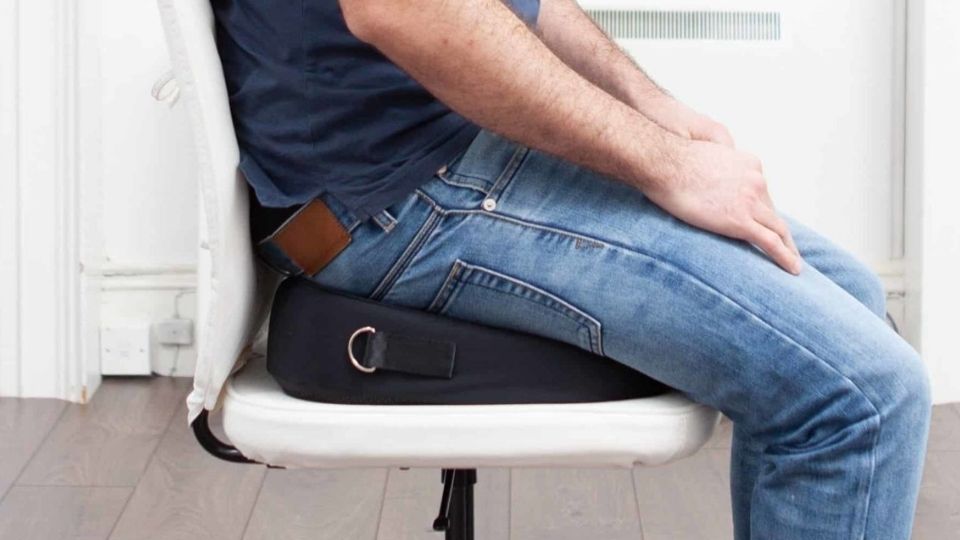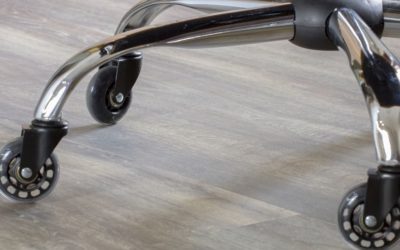Is It Better To Have an Office Chair With or Without Arms?
As I perform ergonomic assessments with various companies, I often get the question of “Should office chairs have armrests?” This is a great question and the answer may surprise you. This article will address all of your concerns and help you decide whether you need an armrest.
As a general rule, armrests provide support for the upper body, shoulders, and neck, and overall comfort while improving posture. Using armrests can reduce shoulder shrugging and forearm contact stress, which are both excellent reasons to use them.
Most likely, if you are reading this article, you require an adjustable ergonomic task chair, and you intend to use it consistently. If you decide whether or not you should have armrests, I will help you settle in this article. On the other hand, if chairs are being purchased for an entire office, then no doubt yes.
All Day Comfort & Support
It has been found that we sit in over a dozen different positions a day. We instinctively try to put our arms on the armrests whenever we sit, and if no armrests are available, we use our laps. If your chair has armrests, your hands will naturally gravitate to those. This is beneficial because being in one position can be very tiring for our joints and ultimately lead to repetitive injuries. Essentially, the armrest is used merely for relaxing. For example, when you want to sit in your chair, roll away from your desk, or move about.
In general, I would recommend armrests to my clients, but they are not the essential ergonomic features to have.
Reasons for Having Armrests:
- Some form of support can reduce the strain on our muscles when we use our hands to carry out an activity.
- Reduce back stress by easing the load placed on the back by the weight of our arms and hands.
- Relief of neck, shoulder, and arm burdens.
- Positivity can lead to better postures.
- Stabilizes posture
- Relieve lower limb pressure and help you get up from sitting faster and easier.
- Prevents excessive loading on the seat.
Should Armrests Be Level With Desk?
Armrests should be at least 2cm-3cm higher than your desk. Adjust a chair and keyboard height for an elbow angle of 90 degrees and your arms close to your sides. You should be able to hang your arms in a relaxed posture without hunching towards your ears. If you do, take a seat at a higher height or lower your keyboard.
Are Chairs Without Arms Comfortable?
For long periods, armless chairs are not very comfortable due to their lack of support for the forearms. Feel how comfortable an armchair is once you place your arms on the arms.
Black Friday: 35% Off Today
Typical Delivery 1-3 Days
Should Armrests Go Under the Table?
The table should have enough space for your legs, but not for your armrests. Armrests should generally be at least 2-3cm above the table to prevent wrist flexion problems such as Carpal Tunnel Syndrome.
Therefore, a desk at the appropriate height should be set beneath your elbows when seated at a desk that has its armrests adequately adjusted.
Avoiding the Mouse Trap
The trapezius is the muscle that undergoes the most tension from improper mouse, and it runs along the spine at all three vertebrae, joins in front, and continues on either side of the neck into the shoulders. Among its features is the ability to support your neck and head, move your shoulder upward, downward, forward and backwards, and make arm movements easier.
There will usually be one side that works more than the other due to its attachment points at opposite sides of the spine, especially, for example, if you reach suitable for the mouse most of the day.
All Day Comfort & Support
Some muscles, mainly the upper trapezius, become overactive without good shoulder positioning, resulting in injury to the neck.
Research published in a journal of Physical Therapy Science suggests that proper armrest placement and support relaxes the trapezius muscle, which reduces neck and shoulder discomfort.
When You Should Remove Armrests
In several of the offices I’ve been in recently, the chairs don’t have adjustable armrests for some of their desk workers. As a result, employees often sit on chairs without them, and that explains their behaviour.
In my opinion, armrests fixed in position or limited in height, width, and rotation will not fit everyone correctly and can’t be utilised properly. Poor movement patterns and breakdown due to those awkward positions could result in pain or, worse, even health issues. In this case, the best course of action is to remove the armrests and invalidate any reported benefits.
It’s important to remember that fully adjustable 4D armrests in height, width, rotation, and forward/reverse positions on a good ergonomic chair are part of an ergonomically correct work environment.
So, if you want to upgrade your workstation to be healthier and more productive, choose a four-dimensional armrest to ensure that your chair fits perfectly to your body.

It has been found that we sit in over a dozen different positions a day. We instinctively try to put our arms on the armrests whenever we sit, if no armrests are available, we use our laps. If your chair has armrests, your hands will naturally gravitate to those. This is beneficial because being in one position can be very tiring for our joints and can ultimately lead to repetitive injuries. Essentially, the armrest is used merely for relaxing – when you want to sit in a chair, roll away from your desk, and move about.
Black Friday: 35% Off Today
Typical Delivery 1-3 Days
In general, I would recommend armrests to my clients, but they are not the most important ergonomic features to have.
7 Reasons for Having Armrests:
- Some form of support can be used to reduce the strain on our muscles when we use our hands to carry out an activity.
- Reduce back stress by easing the load placed on the back by the weight of our arms and hands.
- Relief of neck, shoulder, and arm burdens.
- Positivity can lead to better postures.
- Stabilizes posture
- Relieve lower limb pressure and help you get up from sitting faster and easier.
- Prevents undue loading on the seat.
Should Armrests Be Level With Desk?
Armrests should be at least 2cm-3cm higher than your desk. Adjust a chair and keyboard height for an elbow angle of 90 degrees and your arms to be close to your sides. You should be able to hang your arms in a relaxed posture without hunching towards your ears. If you do, take a seat at a higher height or lower your keyboard.
Are Chairs Without Arms Comfortable?
For long periods of time, armless chairs are not very comfortable due to their lack of support for the forearms. Feel how comfortable an armchair is once you place your arms on the arms.
Should Armrests Go Under the Table?
The table should have enough space for your legs, but not for your armrests. Armrests should generally be at least 2-3cm above the table to prevent wrist flexion problems such as Carpal Tunnel Syndrome. To simplify it, a desk at the appropriate height should be set beneath your elbows when seated at a desk that has its armrests properly adjusted.
When You Should Remove Armrests
In several of the offices I’ve been in recently, the chairs don’t have adjustable armrests for some of their desk workers. As a result, employees often sit on chairs without them and that explains their behaviour.
In my opinion, armrests that are fixed in position or limited in height, width, and rotation will not fit everyone correctly, and they can’t be used properly. Poor movement patterns and breakdown due to those awkward positions could result in pain or worse, even health issues. In this case, the best course of action is to remove the armrests and thereby invalidate any reported benefits.
It’s important to remember that fully adjustable 4D armrests in terms of height, width, rotation, and forward/reverse positions on a good ergonomic chair are part of an ergonomically correct work environment.
So, if you really want to upgrade your workstation to be healthier and more productive, choose a four-dimensional armrest to ensure that your chair fits perfectly to your body.
Final Thoughts
So, should you have armrests on your office chair? It depends. If the majority of people in your company are short and don’t require a lot of space to work comfortably then an armless chair will suffice.
However, if most employees need more elbow room to type or write then it may be time for some new furniture with arms! We provide ergonomic assessments as well as help from our team of experts about what is best for all types of body shapes and sizes so contact us today to schedule a consultation.
Final Thoughts…
Armrests can offer relief to the neck, back, or arm pain you may suffer from after you’ve spent hours working at a desk. If you’ve tried everything to improve your posture, then armrests could be a great solution.
Sources
- Helander, M.G., Czaja, S.J., Drury, C.G., Cary, J.M. and Burri, G., 1987. An ergonomic evaluation of office chairs. Office Technology and People.
- Groenesteijn, L., Ellegast, R.P., Keller, K., Krause, F., Berger, H. and de Looze, M.P., 2012. Office task effects on comfort and body dynamics in five dynamic office chairs. Applied ergonomics, 43(2), pp.320-328.
- Vos, G.A., Congleton, J.J., Moore, J.S., Amendola, A.A. and Ringer, L., 2006. Postural versus chair design impacts upon interface pressure. Applied ergonomics, 37(5), pp.619-628.
- Bush, T.R. and Hubbard, R.P., 2008. A comparison of four office chairs using biomechanical measures. Human factors, 50(4), pp.629-642.
- Ruess, L., O’Connor, S.C., Cho, K.H., Hussain, F.H., Howard III, W.J., Slaughter, R.C. and Hedge, A., 2003. Carpal tunnel syndrome and cubital tunnel syndrome: work-related musculoskeletal disorders in four symptomatic radiologists. American journal of roentgenology, 181(1), pp.37-42.

